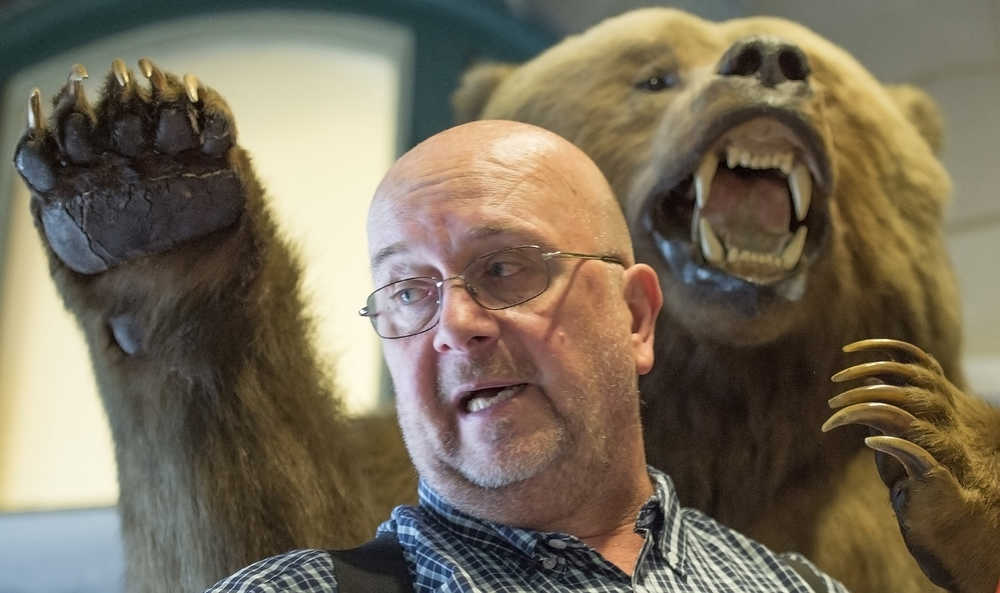BLOOMINGTON, Ind. — Monroe the Bear just got treated to a makeover.
The Kodiak bear, often considered the centerpiece of the Monroe County History Center, on Wednesday got a bit of a “spa day” as Bill Fulcher, owner of Bill’s Taxidermy, brushed out and dyed the Kodiak grizzly’s fur and fixed cracks in Monroe’s mouth and paw pads.
As Fulcher brushed through Monroe’s thick undercoat, he pointed out spots of discoloration that he said would make the fur coat the toughest part of the job. Other items on the to-do list, such as filling in and painting over cracks or fixing a broken toe he found while brushing, wouldn’t take as long, he said.
Hilary Fleck, the history center’s collections manager, said it’s the first time the center has hired someone to work on the approximately 70-year-old bear, according to museum records.
It’s much-needed work for the center’s beloved bear, she said.
“We want to make sure he’s going to be around for another 70 years,” Fleck said.
Monroe, who was officially named in 2013 after a local contest and voting, has called the history center home since 1990.
Before that, he was on display in the center of Schmalz’s Department Store on North Walnut Street for four decades.
Store owner Roy Schmalz had shot the large male in 1949 on Kodiak Island, Alaska.
Schmalz, who was an avid hunter, had to get special permission from the federal government to hunt the bear and bring it back, because Alaska was still a territory, Fleck said.
Fulcher said Monroe is on the top end of the Kodiak range in height and girth — between 8 and 9 feet tall on his hind legs — and a crease in his head serves as further proof that he’s a big male.
“He (Schmalz) didn’t settle for the first one he saw,” Fulcher said.
Other stuffed animals that the center inherited when Schmalz and his son died — the collection includes a cougar, a bobcat and a buffalo head — are similarly large.
Though they aren’t necessarily a part of Monroe County’s history as a species, the animals hold a direct tie to a local historical figure, Fleck said.
“We do like the history behind it,” she said. “It helps us tell the human story of Roy Schmalz.”
And his family has been involved in helping the center tell that story.
Kimberly Schmalz Ochsenschlager, Schmalz’s granddaughter, lives in Illinois but came back to the history center in 2013 for the official naming.
Ochsenschlager also wrote the center a check for $350 to fund Monroe’s preservation.
Fleck said the center hopes to preserve the rest of the taxidermy collection as well, and another $1,050 is needed for that effort.
There also are sponsorships available for other items, including a photo album from 1891 and bound meeting minutes that detail the history of the burning down and rebuilding of a Smithville fraternal lodge in the late 1890s, through a program that’s part of the county’s upcoming bicentennial celebration in 2018.

